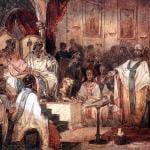
On July 2, we celebrate Civil Rights Act Day. This day commemorates the signing of the Civil Rights Act of 1964, which made discrimination based on race, color, religion, sex, or national origin illegal in the United States. Let’s take a look.
Civil Rights Act of 1964
The Civil Rights Act was the turning point in the Civil Rights movement. Specifically, the act addressed:
- The end of legal segregation (schools, restaurants, transportation, and other public places).
- Equal voting rights by removing discriminatory voter registration practices.
- The creation of the Equal Employment Opportunity Commission (EEOC) fights job discrimination.
- The day is also a tribute to those civil rights activists who helped bring this day to fruition.
In 2020, the U.S. Supreme Court (SCOTUS) ruled that firing an employee because they are gay, lesbian, or transgender is illegal (under Title VII prohibiting sex discrimination). The desegregation of public schools (Title IV) expands the responsibilities of the Civil Rights Commission (Title V). The updated act protects against discrimination in distributing federal funds under federally assisted programs (Title VI).
Timeline of Events Related to the Movement

There were several key legal rulings and acts of protest and resistance in the fight for equal rights:
- 1954: Brown v. Board of Education – The SCOTUS ruled that racial segregation in public schools was unconstitutional.
- 1955: Montgomery Bus Boycott—Inspired by Rosa Parks, the Reverend Martin Luther King Jr. protested segregated public transportation. These protests thrust Dr. King into national prominence.
- 1955: The murder of Emmett Till – A white woman in Mississippi accused Emmett, a 14-year-old black boy, of offending her. Her husband and another family member abducted Emmett and proceeded to beat and mutilate the boy, killing him. Emmett’s mother demanded the casket be left open so the world could see what was done to her child because of racism.
- 1960: Greensboro Sit-ins—Four black students refused to leave a Woolworth’s lunch counter until they were served in North Carolina. This protest inspired similar non-violent “sit-ins” in the South.
- 1961: Freedom Rides – Integrated groups rode buses into the segregated South to protest the lack of enforcement of SCOTUS rulings on desegregation.
- 1963: March on Washington – Dr. Martin Luther King Jr. delivered his “I Have a Dream” speech to 250,000 supporters at the Lincoln Memorial.
- 1964: The Civil Rights Act – President Johnson signs the bill into law.
- 1965: Bloody Sunday – Peaceful protestors were violently attacked on the Edmund Pettis Bridge in Selma, Alabama by state troopers. This attack drew national outrage and helped drive voting legislation into reality.
- 1965: Voting Rights Act – removed barriers to black voting rights, including literacy tests.
What Does Our Faith Say about Equality?
Jesus modeled equality in His time, breaking down barriers to affirm all people. He believed that every person was created in the image of God. (Genesis 1:27) states:
“God created mankind in his image; in the image of God he created them; male and female he created them.”
Jesus always reached out to those who were marginalized in society during His time:
- He touched lepers, dined with tax collectors, and embraced the sinner, forgiving their sins.
- In a patriarchal society, Jesus treated women as equals and included women in His ministry.
- Jesus honored children and worked for all to treat the poor equally.
- Paul stated in Galatians 3:28: “There is neither Jew nor Greek, there is neither slave nor free person, there is not male and female; for you are all one in Christ Jesus.”
Our Lord looks at us all as equals, and as disciples of Jesus, we must do the same. Please share your thoughts on this article in the “Comments” section.
Peace
If you like this article, you might enjoy:
Agape: The Highest Form of Unconditional Love
Israel Strikes Iran Nuclear Sites: A Moral Analysis
988 Crisis Line: Examining the Proposed Budget Impact














